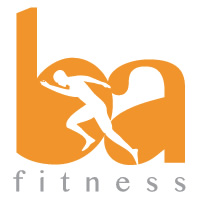Personal Trainer Bristol Principles of Training – Progression & Overload
Welcome to the second of five blogs in this series looking at “Principles of Training”. Before we kick off, a quick recap of the five main principles; Specificity, Progression, Overload, Recovery and Reversibility.
With specificity covered, we now take a look at the role of progression and also overload. The two are closely linked, but it is necessary to be aware of the difference.
PROGRESSION
With progression we are looking more at the development of technique through motor skills, to ensure improved efficiency. This allows the increase in intensity/duration to be achieved without developing, or at least by minimising, bad habits – something that is more likely to occur when the hard training session gets more and more physically demanding.
To use the example of a sprinter, where the overall actions during a race are performed with such speed, and the difference between winning and missing out on a medal are milliseconds apart, it is the apparent ‘small’ adjustments that can be the deciding factor.
Part of a sprinter’s training may involve drills such as the side-step crossover (side stepping on balls of feet with the ‘following’ leg alternately going in front of, then behind, the lead leg) to help improve the hip flexibility.
Or perhaps walking on the toes with clawing action of the lower leg to improve balance, flexibility and range of movement. This action involves the leg is raising high so the thigh is parallel to the floor, the lower leg extends with pointed toe and reaches out in front and claws back as the toes come down to the floor (sometimes referred to as the ‘prancing horse’, as you would see in the equestrian dressage competition).
During these exercises, there will also be considerable focus on the posture – some examples; head & spine alignment, relaxed shoulders, braced abdominals (not tensed or pulled in), relaxed hands, and stable hips.
So as you can see, while the drill sessions may not be physically intense, as they are much more of a mental focus, they are vital to enable the athlete to do specific exercises to progress their technique (see “Specificity” blog – 7th Oct).
With the rehearsal and development of drill techniques, then the next phase can be made all the more effective…
Overload
For basic general health, and assuming you maintain a constant healthy diet, then the following guidelines should be observed as a minimum standard: 1) All the major muscle groups should be worked. 2) A minimum of 30 minutes of exercise that gets you out of breath. 3) 5 days a week. Note that point number two is specific to the individual and should be adapted accordingly.
For improvements to be made, then the body needs to be taken outside of its comfort zone by increasing the physiological stress. If you did the same frequency, intensity, time (spent doing it) and type of exercise then you will plateau at that level. (See the FITT principles – as covered in blog on 30th July.)
The adaptations that occur enable the body to function more efficiently – depending on the type of exercise undertaken. For someone who is new to exercise (or even new to a specific type of exercise), then rapid improvements may be observed due to the dual improvements of;
1) The learned response adaptation. This is a result of the neuromuscular pathways (brain & nervous system telling the muscles what to do) becoming more efficient. Think of learning a new skill such as cycling. The physiological strength is already there, but the coordination of muscle movement and muscle stabilisation requires practise.
2) The ‘real’ physiological adaptation that is, for example, seen in strength training where the muscle cells start to thicken and grow in size (hypertrophy).
So in the example above, we may have gone from, say, 1 MPH on the bike to 10 MPH – a 1000% increase in speed! Clearly an exaggerated illustration whereby that level of improvement won’t be sustained, but it demonstrates why people start to plateau in their training.
This is where the overload in their training is required if the cyclist wants to cycle faster, or for longer (assuming all things are equal, such as type of bike ridden). Developmental leg strengthening and core control exercises are the obvious advancement here, but it should also be noted that a revision of the progression phase is regularly revisited, to hone the techniques required for greater efficiency.
It doesn’t matter whether you are an athlete, beginner / moderate exerciser, or even in a rehabilitating phase, the overload concept applies to all. Just make sure, as you would with any medical prescription, that your exercise prescription is relevant to YOU. If in doubt, speak to a qualified exercise professional.
Until then, stay fit, stay healthy and enjoy your training!
Yours in good health,
Ben
